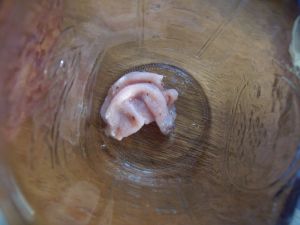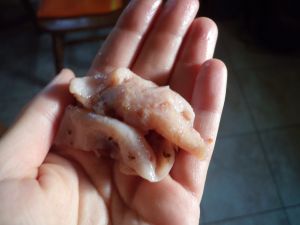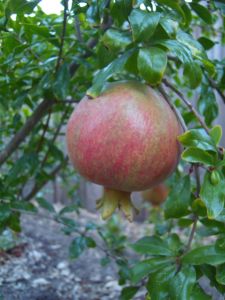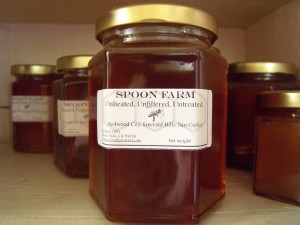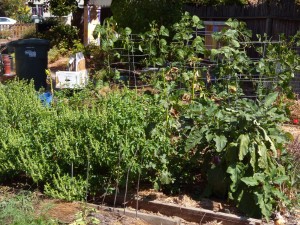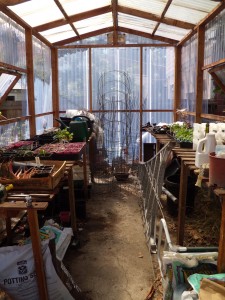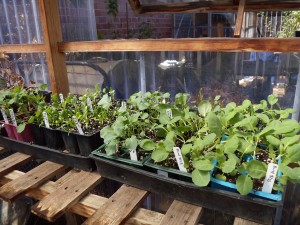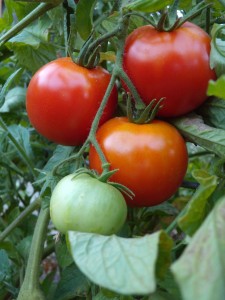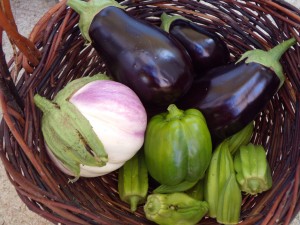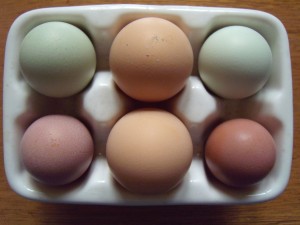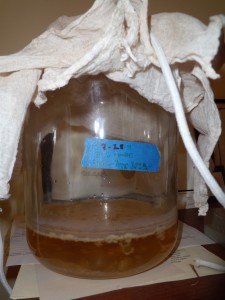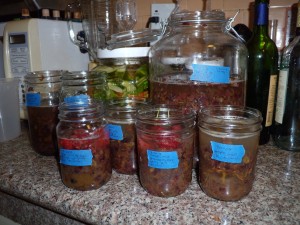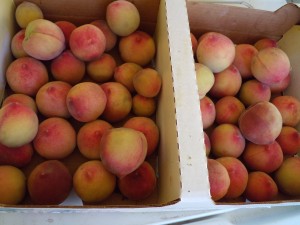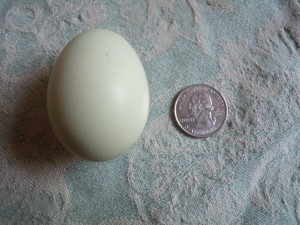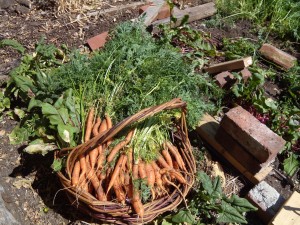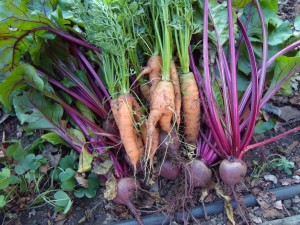The homemade vinegar experiments have been sitting undisturbed in the darkest room in the house for almost three months. This is partly because it takes a while to make vinegar and partly (mostly) because I am really really busy with less interesting things.
I had an unexpected extra day off this past weekend and finally responded to the nagging voice in the back of my mind that’s been urging me to check up on the vinegar.
There’s bad news and good news. The bad news is that my store-bought white vinegar mother grew a nasty blue-green mold layer, as did three of my smaller jars of fruit scrap vinegar. I poked around briefly online and came to the conclusion that there’s no way to salvage a vinegar mother once she’s gone moldy. Bummer.
Because her gelatinous floating mass still seems perfectly alive, I’m having a hard time doing anything to actively dispose of her. A flush down the toilet seems vaguely cruel, as does tossing her into the compost pile. Instead, I’ve taken the passive route of putting her container in full sun on the back stoop–a move I guiltily suspect will also kill her. I never expected to get so emotionally invested in Acetobacter.
In the meantime, fabulous, magical, scientific things have happened in the other jars. In the largest jar of grape mash, a beautiful thick mat of vinegar mother formed on top of the grape skins and liquid. After I’d finished worshipping her, I tore this mother into multiple pieces and placed her in new jars with various concentrations of white and red wines. The experimentation continues!

Vinegar mother–the view from above. You can see fruit flies stuck in the mother. See below for more on the role they play in the vinegar-making process.
The vinegar from this largest jar is delicious, very sour, with a complex flavor and a strawberry-lemonade hue.
The other three small jars of fruit scrap vinegar didn’t make mothers, but the liquid has definitely turned to vinegar. Maybe they need more time? Or maybe the liquid was a little too low? I added distilled water and wine to these jars as well and will wait with baited breath for new developments.
Grape mash vinegar mother recipe:
- 5 cups mashed (juiced) grapes
- 5 cups distilled water
- A ‘splash’ of fresh grape juice
- 2 spoons honey
Combine ingredients in a 1-gallon jar and leave uncovered for 24 hours. Then, use a rubber band to secure cheesecloth over the mouth of the jar and place in a dark warm room (my room honestly isn’t that warm, but I hear warmth is ideal for vinegar production). Leave untouched for about 3 months.
I made this recipe up, and the results were far beyond my expectations. I imagine any number of variations might also yield success.
Grape mash recipes that produced vinegar but no mothers (yet):
- 1 cup grape mash
- 1 cup distilled water
- 1 cup honey
Notes: A pleasantly sweet and tangy vinegar
- 1 cup grape mash
- 1 cup distilled water
- 1 cup white sugar
Notes: This one is a little too sweet for my taste, but definitely still vinegar-y
- Unmeasured amount of grape mash (1 cup?)
- Unmeasured grape juice (1 cup?)
- unmeasured quantity of whole strawberries and raspberries (1/2 half cup?)
- 1 tsp white sugar
- Distilled water to cover
Notes: Very tasty, with berry flavors coming through
A note on fruit flies
I left my jars of grape mash uncovered for a day to allow fruit flies to get inside and jumpstart the process. From what I’ve read, fruit flies carry Acetobacter–the genus of bacteria that turns ethanol into acetic acid, or vinegar–on their feet and in their bodies, thus inoculating the mixture and increasing the chances that a good mother will form.
There’s no way around it: a jar of fermenting fruit with a captive cloud of fruit flies emitting a tiny buzzing sound beneath the cheesecloth cover is pretty disgusting. Even more gross is taking off the cheesecloth three months later and releasing a crowd of fruit flies—the great- great-grandkids of that first colony. Whatever works, though, you know? The vinegars in all of the non-moldy jars taste great and the mother was something to behold.
I’ll be interested to see the difference between the white and red wine batches I’ve started with pieces of vinegar mother, as well as whether the smaller jars will end up forming mothers of their own. The grape mash I used back in August was from Flame grapes, a table grape that Kelly assures me is neither a red, nor a white ‘wine grape’. Will the mothers have a wine preference? Stay tuned.


